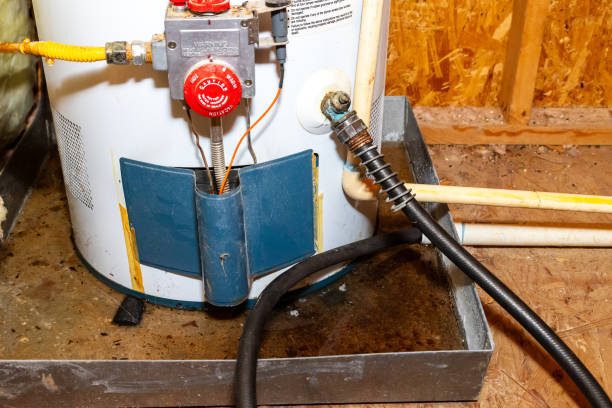Heating Repair in South Tampa, FL

When your heating system falters in South Tampa, our expert heating repair services are ready. We address common furnace problems like cold air, short-cycling, and strange noises, plus heat pump issues such as insufficient warmth or freezing outdoor units. Our comprehensive process involves thorough diagnostics, clear explanations, and precise repairs using quality parts. We ensure your system is restored safely, efficiently, and reliably, bringing comfort back to your South Tampa home. Trust us for dependable heating solutions.

Expert Heating Repair for Your South Tampa Home
While South Tampa is renowned for its sunshine and warm weather, residents know that a sudden cold snap can make a reliable heating system an absolute necessity. When your furnace or heat pump fails to provide the warmth and comfort you expect, it disrupts your home's sanctuary. An underperforming heater isn't just an inconvenience; it can be a sign of underlying issues that affect your system’s efficiency and safety. At Sunstate Mechanical Contractors, Inc., we provide meticulous heating repair services designed to address the root cause of any problem, ensuring your system operates dependably when you need it most.
Common Heating Problems We Resolve in South Tampa
Heating systems are complex, and a variety of issues can lead to a decline in performance. Recognizing the signs of a problem is the first step toward a solution. Our experienced technicians are adept at diagnosing and repairing a full spectrum of heating malfunctions, whether in a traditional furnace or a modern heat pump.
Furnace Repair Needs
Even in Florida, many homes rely on furnaces for powerful and consistent heat. If your furnace is acting up, you may notice one of these common symptoms:
- System Blows Cold or Lukewarm Air: One of the most common complaints is a furnace that runs but fails to produce heat. This can stem from several sources, including a malfunctioning thermostat, an extinguished pilot light, a faulty igniter, or an issue with the gas supply. Our diagnostic process pinpoints the exact component failure to restore warm airflow.
- Furnace Cycles On and Off Frequently: Known as short-cycling, this issue indicates your system is working harder than it should. It can be caused by something as simple as a severely clogged air filter restricting airflow or a more complex problem like an improperly calibrated thermostat or an oversized unit for your space.
- Unusual Noises: Your furnace should operate with a gentle hum. Loud or sudden noises are a clear warning sign. A high-pitched squeal could indicate a problem with a belt or the blower motor bearings, while a grinding sound may point to a serious motor issue. Loud banging or popping can signal problems with the ductwork or, in serious cases, the heat exchanger.
- Strange Odors: A faint burning smell when you first turn on the heat for the season is often just dust burning off the components. However, a persistent burning odor, a smell of gas, or a musty scent from the vents requires immediate professional attention to rule out safety hazards like a gas leak or electrical problem.
Heat Pump Repair Needs
Heat pumps are an excellent, energy-efficient choice for the South Tampa climate, providing both cooling and heating. When they falter in heating mode, the cause is often specific to their unique operation.
- Insufficient Heating: If your heat pump is running but not adequately warming your home, it could be struggling with a low refrigerant charge, a dirty air filter, or an issue with the outdoor coils. A malfunctioning reversing valve, the component that switches the unit from cooling to heating, is another common culprit.
- Outdoor Unit Freezes Over: It is normal for a light layer of frost to form on the outdoor unit in cool, damp conditions, which the system’s defrost cycle should handle. However, if the unit becomes encased in a thick layer of ice, it points to a problem. This can be caused by low refrigerant levels, a malfunctioning outdoor fan motor, or a failure in the defrost control board, all of which hinder the unit's ability to transfer heat.
- Loud or Vibrating Operation: While heat pumps generate some noise, excessive rattling, grinding, or buzzing can indicate a problem with the compressor or fan motor. Ignoring these sounds can lead to a more severe and costly system failure.
Our Comprehensive Heating Repair Process
A lasting repair goes beyond just fixing the immediate symptom. Our approach is built on a thorough, step-by-step process that ensures we identify and resolve the core problem, restoring your system’s safety, efficiency, and reliability.
- Thorough Diagnostic Inspection: Our process begins with a comprehensive evaluation of your entire heating system. A certified technician will inspect all critical components, including the thermostat, electrical connections, filters, blower assembly, and safety controls. For furnaces, we examine the burners, igniter, and heat exchanger. For heat pumps, we check refrigerant levels, coils, and the reversing valve. This detailed analysis allows us to understand the complete picture, not just the obvious fault.
- Clear Explanation and Recommendations: We believe in complete transparency. Once the diagnostic is complete, our technician will explain the findings to you in clear, understandable terms. You will know exactly what is wrong with your system, what caused the issue, and what repair options are available. We provide a straightforward assessment so you can make an informed decision about your home.
- Precision Repair with Quality Parts: With your approval, our technician will perform the necessary repairs using high-quality parts and industry-leading techniques. Our team has extensive experience servicing all major brands, including Trane, Carrier, Lennox, Goodman, Rheem, and more. This expertise ensures the repair is done correctly the first time, adhering to manufacturer specifications for a durable solution.
- System Verification and Testing: After the repair is complete, we don’t consider the job finished. We conduct a full operational test of your heating system. This includes checking airflow, verifying thermostat calibration, and running a heating cycle to confirm that your home is warming evenly and efficiently. This final step ensures your system is not only repaired but also optimized for peak performance.










